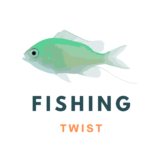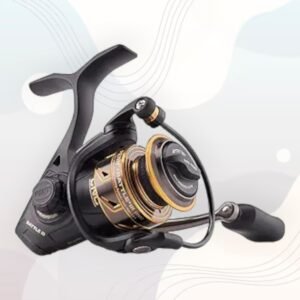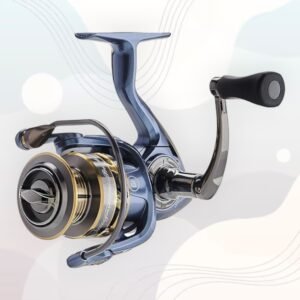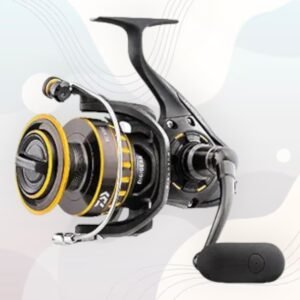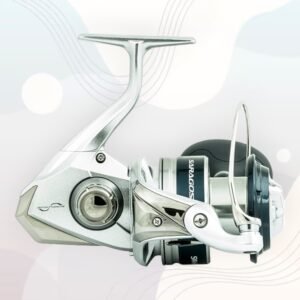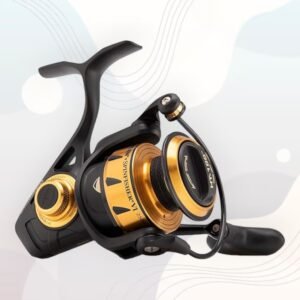
Hey there! I have been fishing for 19 years and am happy to help you find the perfect saltwater spinning reel. So, what kind of fishing are you planning to do?
When choosing a fishing reel, consider its durability, as it affects its long-lasting performance. It should be smooth, lightweight, and powerful.
If you’re short on time, the Daiwa BG is better for inshore fishing and the Penn Battle III for offshore. Both reels are not too expensive and have everything you need for a specific job.
Now, let’s dive in and explore these excellent saltwater spinning reels together!
Our Top 5 Picks
Best Saltwater Spinning Reels Reviewed
If you’re wondering why separate reels are necessary for inshore and offshore fishing, here’s a simple explanation: Offshore fish are more significant. This means that offshore reels are suitable for offshore fishing, but inshore reels are better for inshore fishing.
- Ball Bearings: 5+1
- Reel Size: 1000-10000
- Gear Ratio: 4.2:1
- Max Drag Weight: 40 pounds
- Weight: 33.52 ounces
Pros
- Very smooth and balanced reel.
- Extremely good quality as expected from Penn.
- Comes ready to go and works well.
- Fits various Ugly Stick models (Catfish, Tiger, Bigwater).
Cons
- Less Smooth Than Daiwa BG
Start with the award-winning PENN Battle III Nearshore/Offshore spinning reel. It is made entirely of durable metal and features a machined aluminum spool with line capacity rings that provide superior grip.
This reel recovers 43 inches of line per handle revolution using CNC gear technology, with the spool rotating 4.2 times.
The PENN Battle III is smooth to use because it has six bearings. These include five stainless steel ball bearings and one special anti-reverse bearing.
The HT-100 front drag system can take 40 pounds of pressure with carbon fiber washers. Because of this, you may confidently cast it for large, heavy fish. You can angle using both left and right handles.
Yes, every reel has limits. Its non-waterproof IPX technology makes the PENN Battle III unreliable in seawater. It would help if you went with the Daiwa BG or another PENN model.
- Ball Bearings: 7+1
- Reel Size: 3000-6500
- Gear Ratio: 5.3-5.6:1
- Max Drag Weight: 15.4-33 pounds
- Weight: 10.8-29.5 ounces
Pros
- Powerful, Strong Drag
- Smooth Action
- Rigid and Durable
Cons
- A little heavy
The Daiwa BG is the most fantastic spinning reel for inshore fishing. It’s an economical saltwater spinning reel with smoothness, durability, and a firm drag.
The Daiwa BG is not just smooth; it’s a precision instrument with 7+1 ball bearings. Its waterproof drag and corrosion-resistant aluminum body make it a reliable and effective tool for underwater spinning.
Plus, the reel has a great pull system. The Daiwa BG has waterproof carbon automatic drag (ATD) technology that ensures consistent and progressive drag.
It reacts quickly and well at first but then gears up the force in the middle. In addition, 17.6 pounds of drag at size 3500 is enough for the largest inshore fish.
For inshore fishing, I recommend this budget reel. See full specifications here.
- Ball Bearings: 5+1
- Reel Size: 6000-25000
- Gear Ratio: 5.7:1
- Max Drag Weight: 22 pounds
- Weight: 16 ounces
Pros
- Excellent Casting Distance
- Suitable for Saltwater & Freshwater
- High Durability
Cons
- Little heavyweight
With its impressive 5.7:1 gear ratio, the Shimano Saragosa SW is a top-rated choice among saltwater anglers. It is incredibly lightweight, which improves its handling and balance.
It has IPX8 technology, which provides enhanced protection against sand and water. I tried casting from the beach.
Shimano Saragosa feels like butter! It’s solid, and the drag is awesome. Catching this 33″ black drum did not put any stress on the pole or my 15-pound line. I liked the smooth, effortless recovery: Hand-felt and sturdy handle.
This reel’s defining characteristic is its maximum drag of 22 pounds. It can handle mono and braid lines. With 5+1 bearings, it performs well in various saltwater fishing conditions.
Finally, this is an excellent choice for a seamless saltwater fishing experience in offshore locations.
- Ball Bearings: 5+1
- Reel Size: 2500-10500
- Gear Ratio: 4.2-6.2:1
- Max Drag Weight: 15-50 pounds
- Weight: 10.7-38.6 ounces
Pros
- Improved Line Management
- Sealed Protection
- Value for Money
- Reliable Stopping Power
Cons
- Traditional Design
Firstly, the reel’s body is entirely made of metal through CNC gear technology, ensuring excellent water resistance with its IPX5 grade.
Its slam drag mechanism produces excellent stopping power, which is critical for powerful fish, and draws them away from the structure.
For starters, the Penn Spinfisher VI is similar to the Battle III. It runs more smoothly and reliably than the Penn Battle III but is more expensive.
Yes, the Spinfisher VI is heavier than some other saltwater spinning reels. But this weight is a testament to its robust build, promising durability, and long-lasting performance that lighter reels may not offer.
In conclusion, Penn Spinfisher VI is a fantastic alternative to Penn Battle III.
- Ball Bearings: 7+1
- Reel Size: 2000–4000
- Gear Ratio: 5.2:1
- Max Drag Weight: 6 pounds
- Weight: 7.76 ounces
Pros
- Lightweight
- Smooth Operation
- Improved Durability & Versatility
Cons
- Limited Spool Capacity
The final reel on this list, Pflueger President spinning reels with 7+1 ball bearings, ensures smooth operation at an affordable price. What if I told you this budget reel has smoother, lighter, and more robust drag?
I’m not kidding. It has a body made of graphite and features a rotor. The handle and knob are suitable for both right- and left-handed anglers due to their aluminum material and soft-touch rubber design.
At this point, you’re probably wondering how this reel is cheaper than the Penn Battle III.
The slow oscillation gearing enables a tight line lay, enhancing casting and control. Experience the power of a 5.2:1 gear ratio that comes with an aluminum spool. It is a great reel; I chose this backpacking for trout.
Even so, the 7-ball bearing system and instant anti-reverse ensure smooth operation for any fishing experience.
Buying Guide
You’ve already decided about one of the reels on this list. But have you ever thought about what would happen if you got your hands on a newly released fishing reel? Would it be a wise purchase?
Line Capacity
Inshore Fishing (Reel Sizes 3000-5000): In shallower waters with smaller fish, you will only need a little line to reach the depths or reel in the catch.
More Offshore Fishing (Reel Sizes 5000-8000): Deeper waters and larger fish require more line capacity.
Avoid going over 8000 unless necessary, as it adds an unnecessary weight!
Drag System
Have you considered using a drag system for fishing? It can help prevent line breakages and reduce the chances of exhausting the fish.
To catch bigger fish, you need a more substantial drag.
When offshore fishing for larger fish, setting a maximum drag weight of 30 pounds is crucial. Aim for a maximum drag weight of around 17.5 pounds for inshore fishing with smaller fish. This will help you catch your desired fish without any hassle.
Gear Ratio
The gear ratio tells you how often your thread turns when you turn the handle. 6:1 is fast, while 4:1 is usually slow.
When selecting a fishing reel, the gear ratio must be considered. A faster gear ratio can make it easier to retrieve the line quickly, but there may be better options.
The ratio’s effectiveness also depends on the type of bait being used. Faster gear ratios work best with lures that move quickly, while slower ratios are more effective for lures that move more slowly.
I like 5:1 because it works well with both slow and fast baits, whether you’re fishing near or far from shore.
Durability
Durability is crucial in saltwater environments. Your reel must be resistant to corrosion, durable, and capable of preventing sand buildup. When choosing ball bearings, I recommend using ceramic or stainless steel materials.
Ensure water and sand aren’t inside the spool body or the bearing system.
These are features that most current saltwater spinning reels have. Durability is critical, and using freshwater reels in saltwater is not recommended!
Freshwater vs. Saltwater Reels
It is essential to avoid using your freshwater fishing reel for saltwater fishing.
Freshwater reels often have saltwater-resistant features, but saltwater reels’ materials are ready to withstand corrosion. Freshwater reels typically incorporate sand or water protection.
Even after thorough cleaning, short-term saltwater contact when fishing may damage a freshwater reel. Consider buying a saltwater reel to minimize damage and extra costs.
As discussed above, even the most incredible saltwater fishing reels need frequent cleaning and maintenance.
How to Clean Saltwater Spinning Reels
When cleaning your reel, seeing a demonstration is better than depending on spoken instructions.
Check out this instructive video demonstrating the best way to clean your saltwater reel:
FAQs
What is the best spinning reel for saltwater?
If you want to go inshore fishing, Daiwa BG is the best choice. For offshore fishing, the PENN Battle III the best choice because of its reliability and durability.
What size spinning reel for saltwater?
Reels of medium size (4000 to 5500) are adaptable and suitable for freshwater and moderate saltwater fishing. They work well with a rod that is 7 to 8.5 feet long.
What is better, a 2500 or 3000-size spinning reel?
When using 8-pound fluorocarbon lines or stronger nylon monofilaments, the 3000 Daiwa reels beat the 2500s.
What is a 7000 size reel good for?
When fishing for bass, use reels in the 5000 to 7000 range. These spinning reels function best with lines weighing 15 to 30 pounds, often in their teens or twenties. Additionally, they can hold a lot of lines.
My Verdict
Saltwater may be rough on your fishing gear, but with the appropriate reel, you won’t have to worry.
The Penn Battle III is an excellent option for offshore fishing, while the Daiwa BG is the best option for inshore fishing. Both are excellent possibilities at reasonable prices.
I hope this review helps you choose the best saltwater spinning reel. Make sure to match it with a nice rod!
Best of luck for your saltwater experiences!
